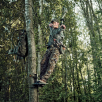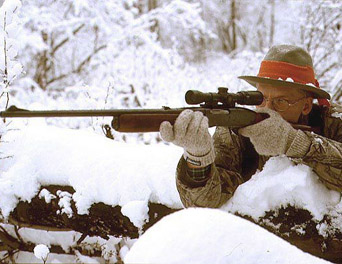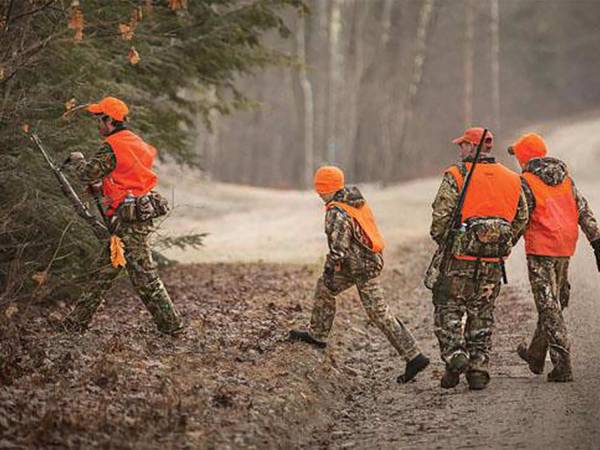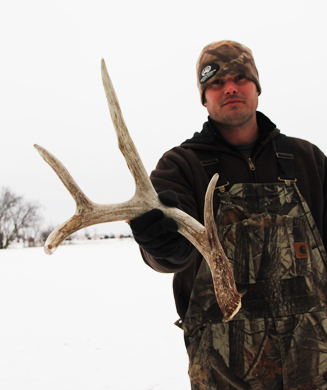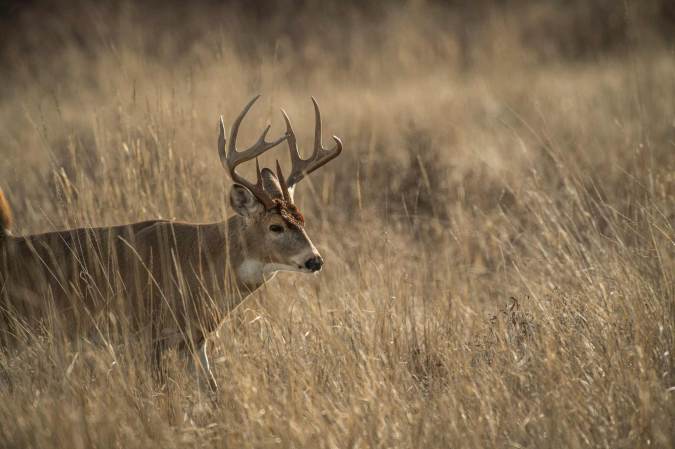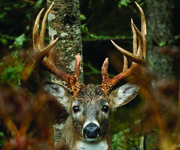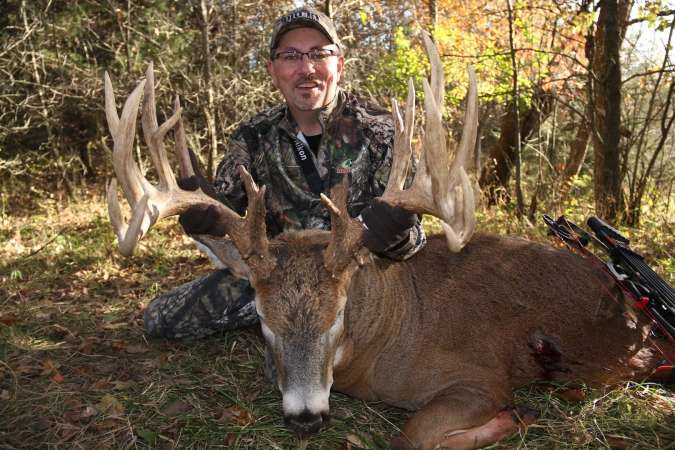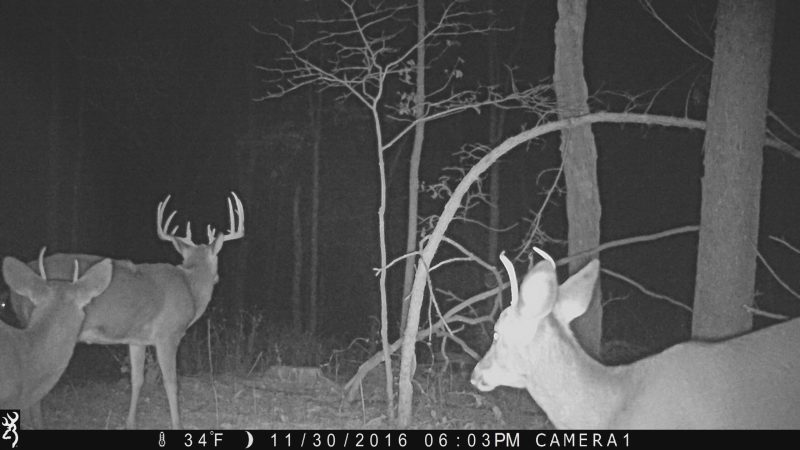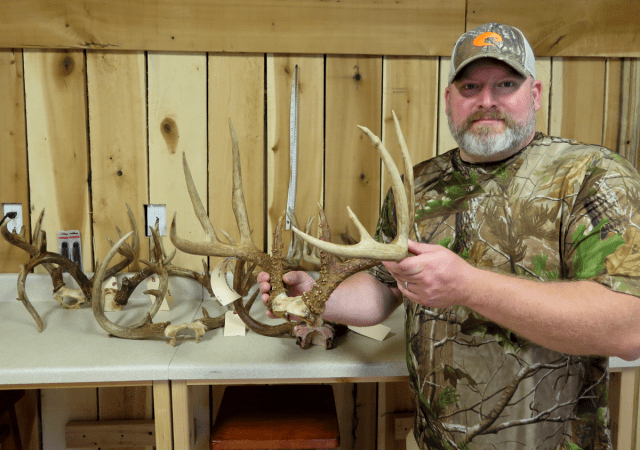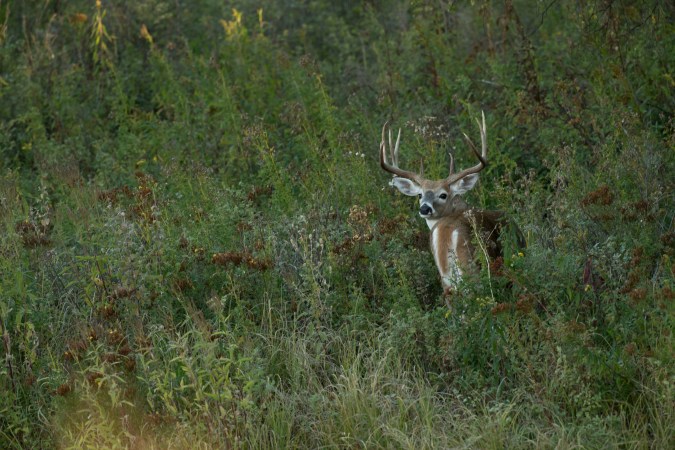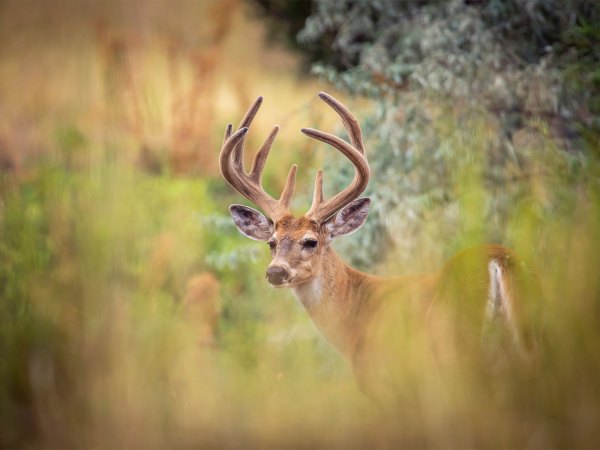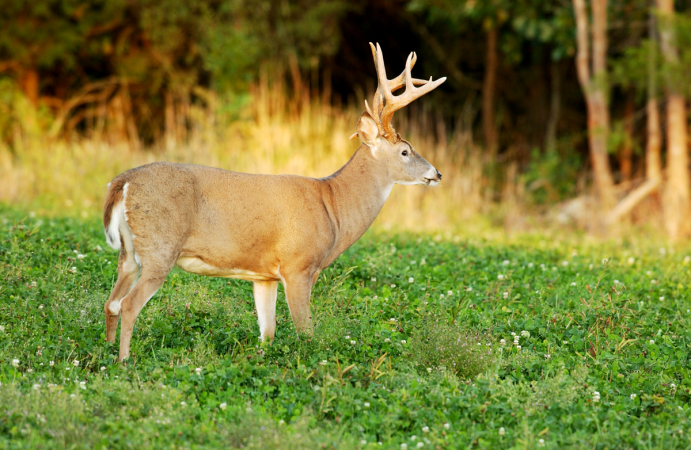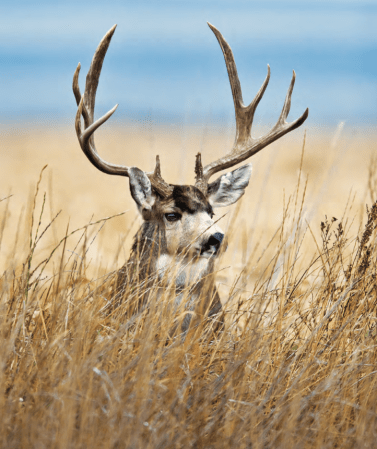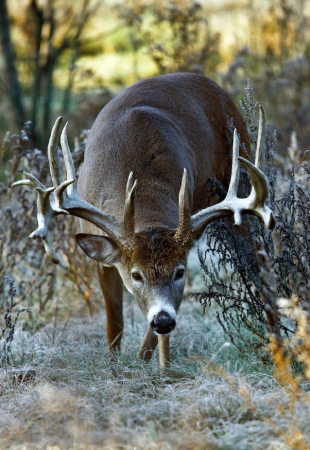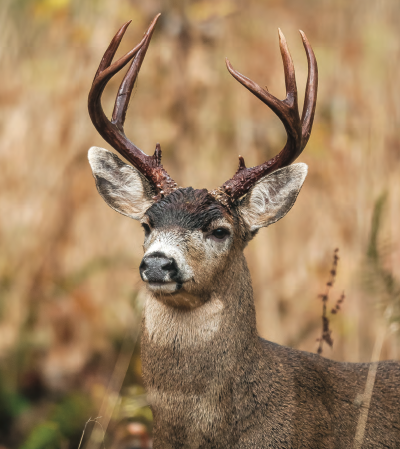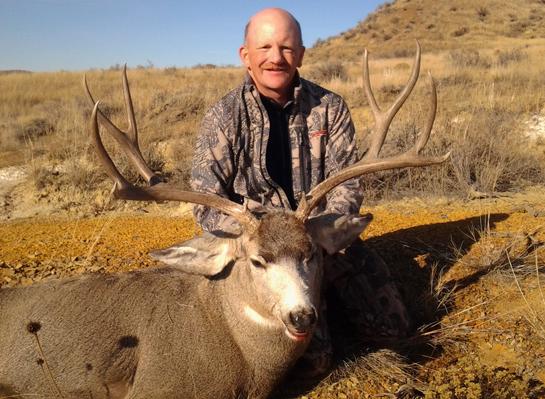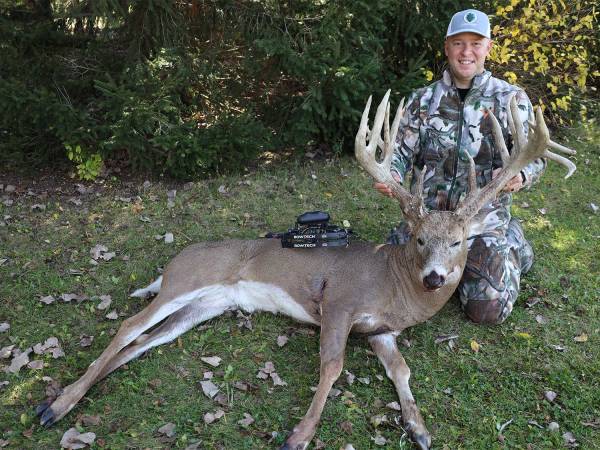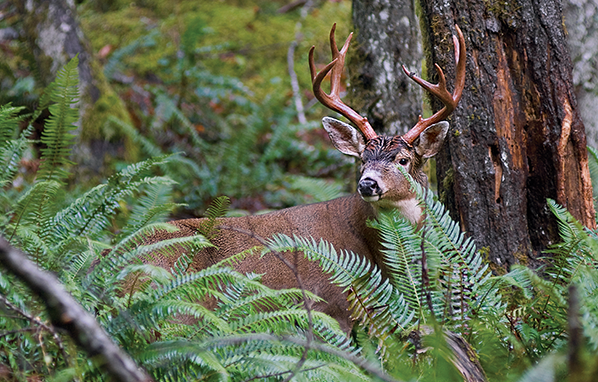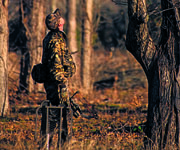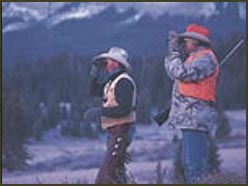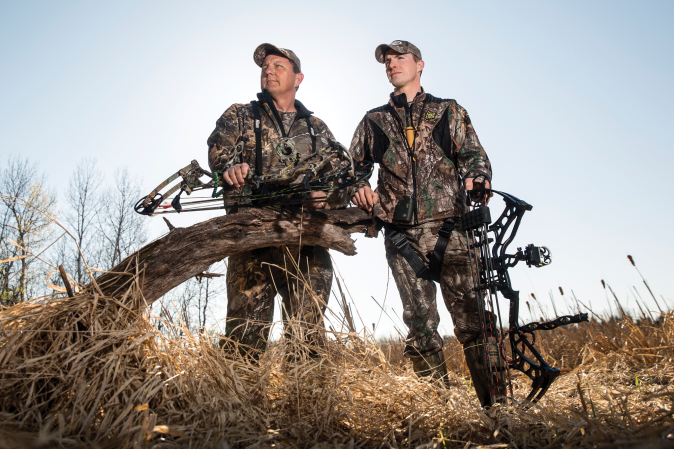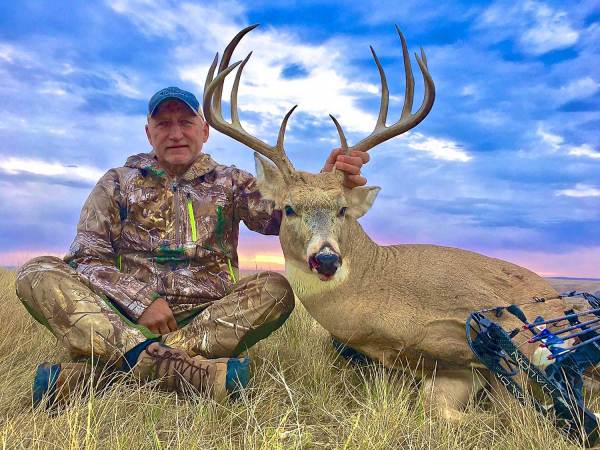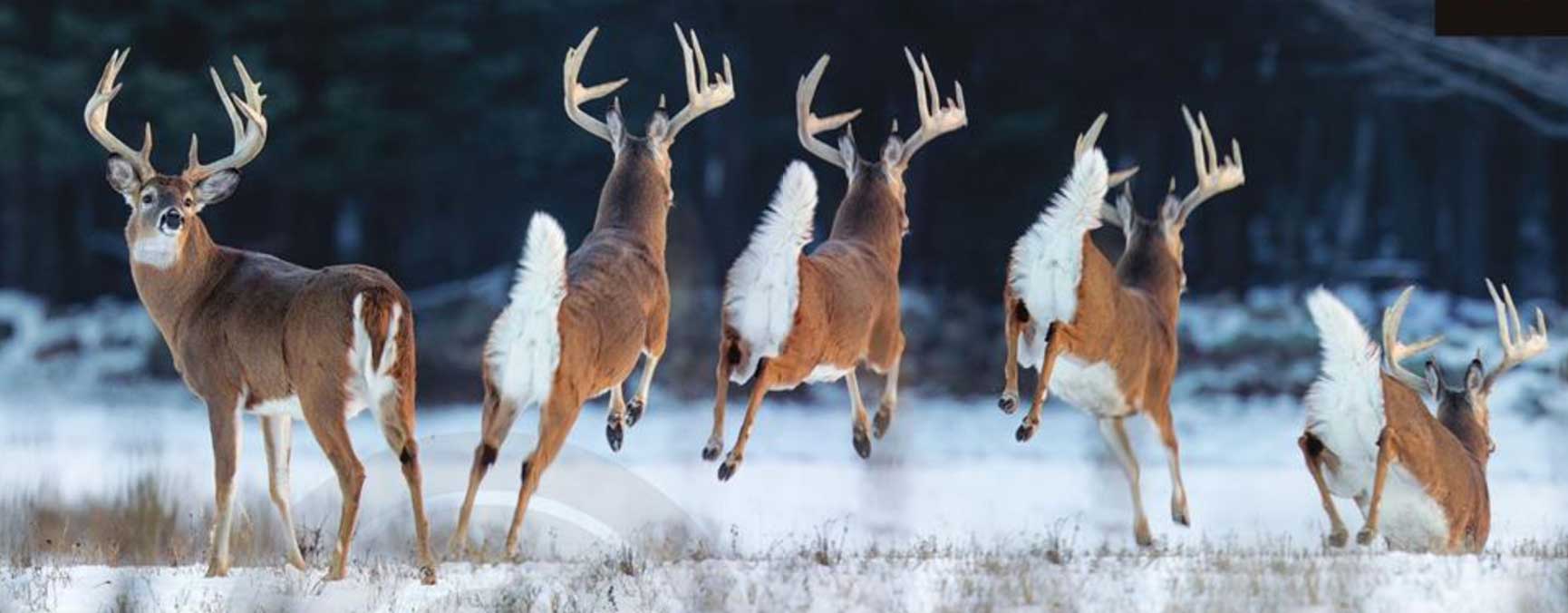
Time is running out on your deer season. You can watch the hourglass empty, or you can use proven tactics from our six experts to take your biggest buck yet. It’s your last chance—better make it count.
1) Kill Plot
One week to hunt
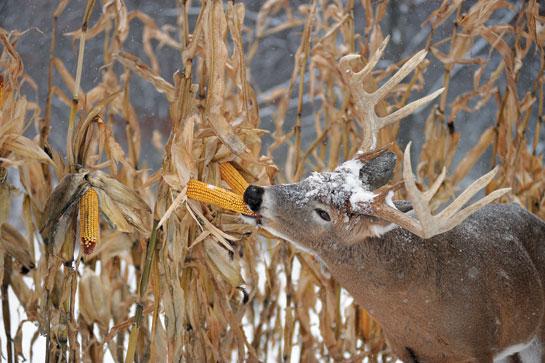
The fat lady hasn’t sung yet. With a week left in the season, there’s still time to stick to a well-orchestrated game plan, as long as that plan revolves around food.
When it comes to closing the deal on a late-season buck that’s on a feeding pattern, few can do it like Rich Baugh. “In six of the last seven years, I’ve killed my target bucks the first time I hunted them,” says Baugh, who hunts Iowa’s late muzzleloader season. “Last year, I killed my buck on the first night. The next night, my son killed his.” Baugh, a land specialist with Whitetail Properties (a national real estate company that specializes in prime deer hunting land), says his strategy can be employed just about anywhere, but it’s one that requires unwavering discipline.
“You can’t let those deer know they’re being hunted. It’s that simple. I never, ever hunt mornings during the late season,” he says. “I never, ever let deer in a food plot see me leave. And I never, ever hunt a blind when the wind is wrong or when the wind is going to blow near the bedding area.”
Plan of Attack
Baugh’s approach is simple: Find a hot food source (he prefers standing beans but plants a variety of brassicas, cereal grains, beans, and corn in all of his plots) and hunt it from a box blind located well away from available bedding cover.
“My food plots are pretty much out in the open. My blinds are sitting right out in the middle of nothing. No trees. No bedding cover. And my approach routes are in the open as well,” he says. Baugh feels that by staying far away from the timber and bedding cover, he’s able to greatly minimize the risks of bedded deer seeing or smelling him.
“Trail cameras are key because they help me know which bucks are moving in daylight and which food plots they’re hitting,” he says. “But you have to be just as careful when checking cameras as when you’re hunting. You can’t let scent go into those bedding areas–ever.”
2) Rut Action
Five days to hunt
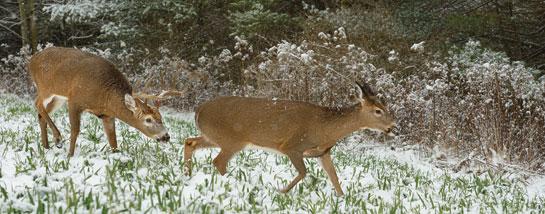
The notion of a “second” rut is one that generates plenty of debate among whitetail hunters. Carl Doron, owner of Snipe Creek Hunting Lodge in western Kentucky, will participate in such debates–as long as the focus is slightly altered. “It’s not a question of whether there is a second rut. The question is really whether that second rut is better than the first,” he says. “And in some instances, it is.”
Doron isn’t just making idle talk. He’s got plenty of data and experience to back up his position. “I run a very extensive system of trail cameras on about 40 farms. We’ve got about 20 hunters providing us with daily reports on whitetail behavior,” Doron says. “And we’ve got a unique situation here. The buck-to-doe ratio is very balanced, and there are plenty of high-protein food sources. That means we’re going to see a lot of our yearlings go into estrus around the end of November and into early December.”
And fawns do things that adult does in estrus do not: They make mistakes. “When bucks get with an adult doe during the initial breeding period, she’s going to make that buck pretty hard to kill,” he says. “Fawns in estrus aren’t as smart, and they make a lot more mistakes than an old doe will. Those fawns are the key.”
With time running out and fawns drawing the attention of big bucks, it’s time to set up in areas with heavy deer traffic. While an old, savvy doe will hole up with a big buck in thick cover and move only when necessary, fawns are far more social. They’ll tend to stick to traditional travel routes and will likely utilize the same food sources that attract late-season deer in your area. Calling and scents can work, but both should be used sparingly. By this stage of the game, bucks have heard and smelled it all.
3) Track’Em Down
Three days to hunt
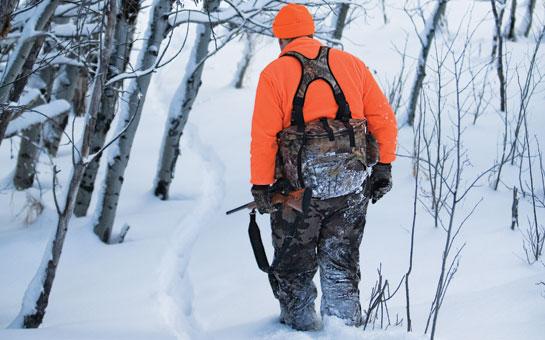
To some hunters, tracking isn’t just a viable option for filling a tag as the final days of the season slip away–it’s one of the most noble ways of putting venison on the table “I tell everyone the same thing about tracking,” says Hal Blood, author of Hunting Big Woods Bucks (bigwoodsbucks.com). “There’s a buck at the end of that track. All you have to do is catch up to him.”
To get started, you need some fresh snow and a big track–anything over 3 inches long that features visible dewclaws splaying wider than the hoof. “You want to find a fresh track, but people seem to have different ideas of what that means. To me, anything that was made the night before is fresh. I don’t care if it’s an hour old or 10 hours old, as long as it was made the previous night,” Blood says. “That’s probably going to be the toughest thing for people to learn–how to determine how old a track is. And the only way to really learn is by experience. But if you’ve got fresh snow, that makes things a lot simpler.”
Once he’s found a track, Blood moves along fairly quickly in an effort to catch up to the deer. If the tracks were made the previous night, the odds are good that the buck has bedded for the morning. “I really don’t care if I jump that buck or not. If I do, it’s no big deal. That just means that I’ve caught up to him,” Blood says. “Once I’ve jumped the buck, I’m going to sit down and have a sandwich and wait about 30 minutes. Everyone thinks the best crack you’ve got at that buck is the first time you see it. Not true. The best time is the second time.”
About a half hour after being jumped, the buck is likely to relax again. And with the buck now on his feet, finding him just got much easier, says Blood. “As long as you don’t take off after him and push him, that buck is likely going to settle right down. If the buck has been bedded for several hours, he’s probably going to feed for a bit. Stay on the track and scan ahead.”
4) Move In
Two days to hunt
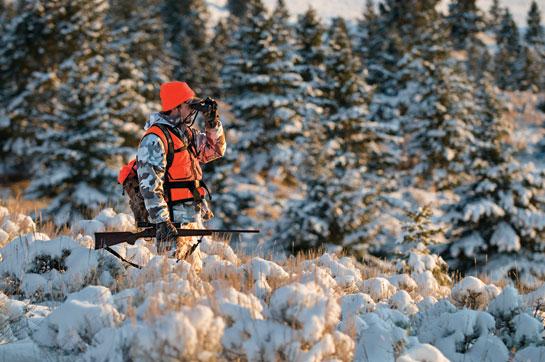
With just two days left to hunt, the waiting game is officially over. “When you see a buck and it’s going away from you, you have absolutely nothing to lose,” says Mike Wheeler, a veteran deer hunter and owner of Wheeler’s Whitetails in Kansas.
The tactic he employs late in the season is simple: Wait until you can see which direction a buck is headed as he leaves a food source, and then hustle like hell to cut him off. Wheeler uses whatever terrain is available to stay hidden while moving ahead in an effort to cut the buck off. “I usually know which trails the deer like to use. What I don’t always know is which trail they’re going to use that morning,” he says. “Late in the season, you’re not going to call the deer over. And if they aren’t coming to you, then you don’t have a whole lot of choices. You can either get aggressive and get after them or you can go home empty-handed.”
With the peak of the rut well behind them, most bucks are concerned only with filling their bellies and restoring the body fat that was depleted during several weeks of chasing does. While most late-season hunts revolve around targeting primary food sources, morning setups directly on a food source are often a gamble because the deer are already out feeding when you show up. Instead, hang back and watch from a distance to see which direction deer are headed when they leave the field.
“You have to be able to adapt,” Wheeler says. “I love hunting evening food sources. But when you’re running out of time, you have to get aggressive and go after them. When you know where they’re going, move–run if you have to. But play the wind and get in front of that buck!”
5) Ambush the Bed
One day to hunt
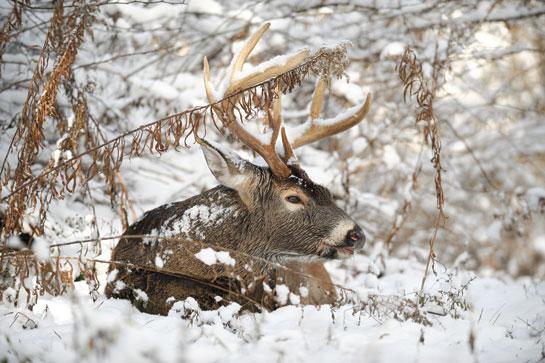
This is a last-ditch tactic. in order to succeed, you’ll need every factor in your favor. “Hey, sometimes you have to roll the dice and take a chance,” says New York hunter Tim Andrus. “Trying to get into the bedding area of a big buck that’s worn down from the rut and has been pounded with hunting pressure for months is a big-time risk. But what have you got to lose at this point?”
Late-season hunting, by and large, is an early-morning or late-evening affair for one very important reason: The deer are ultra-sensitive to any level of human pressure. Trying to slip into a buck’s bedding area is as high pressure as it gets. You’ll either kill the buck or blow it out of the spot for the rest of the season. Andrus’ tactic calls for an early-morning mission. He says finding and then getting into the bedding area isn’t particularly difficult. Doing so without the buck knowing you’re there is the real trick. “If you’ve hunted the area much at all, you probably have a real good idea where the buck is bedding. Trouble is, late in the season those deer are going to be trying to conserve as much energy as possible–particularly if cold weather has set in. And that means they’re going to be bedded pretty close to the food source,” Andrus says. “You have to find a way in that won’t disturb those feeding areas. If that means walking a mile through the timber, then that’s what you have to do. You have to get there first, and you have to get there without bumping any deer.”
To do this, you must leave early. Plan on being on stand at least an hour before daylight. The good news is, most of the deer will be feeding outside of the timber. The bad news is, at this time of year, the timber is usually wide open, and cold weather makes for noisy, crunchy walking conditions. As with most phases of the season, the first hour of daylight should produce prime movement. But don’t get too antsy. Late-season bucks will often hang in the fields a bit longer in the morning and spend a bit more time browsing their way back to bed. Of course, that’s if they haven’t been bumped off the fields.
“Really, if you can get in and set up without those deer knowing you’re there, you stand a pretty good chance of catching that buck coming back to bed,” Andrus says. “They haven’t been messed with in the mornings for a while, and they need to feed heavily to survive winter, so they might have a false sense of security. But you absolutely must keep the wind in your favor and do everything you can to avoid tipping them off on your way into the bedding area. Otherwise, your season is over.”
6) Push It
Six hours to hunt
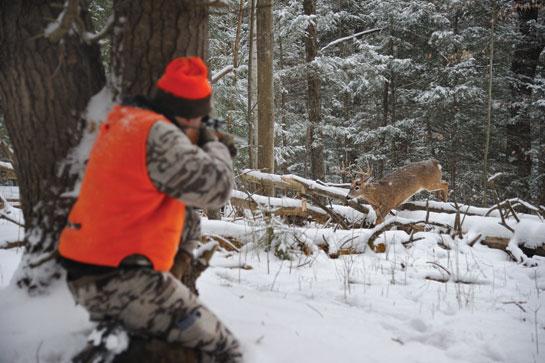
With just a few hours of the season remaining, you have literally run out of options. If you’ve still got a tag to fill, it’s time to push the cover. Wisconsin deer hunter and video producer Jared Scheffler (whitetailadrenaline.com) believes he has perfected the art of the push.
“There was definitely a time when I was more reluctant to drive deer. I mean, I grew up doing it a lot, but there were always areas that I sort of worried about driving because I was afraid of messing up the spot,” he says. “But we’ve been trying for several years to get that exact scenario on camera, and it hasn’t happened yet. If you do the drive right, you’re only going to move those deer. You’re not going to bust them out of the county.”
The drive should be conducted near a likely bedding area. If it’s a parcel you’ve hunted often, you’ll likely know where those locations are. If you’re pushing a piece that you’ve never hunted before, determine where the thickest cover is. That’s where the deer will be.
“I like to keep drives small. One, maybe two drivers. Two standers. I love the camaraderie of a bigger drive, but they just aren’t as effective. There are too many things that can go wrong with a larger group. There’s too much confusion over who should be where and when they should be there,” he says. “Smaller drives are the best. You’re not looking to send the deer running out. You’re trying to steer them, and that’s a lot easier to do when you know exactly where your standers are and you don’t have a ton of drivers mixing things up.”
Scheffler says wind direction has little bearing on how he, as the driver, will make his push. Standers, however, should try to keep downwind of cover that holds deer. He tries to stay as far away from the actual holding cover as he can while still getting the deer on their feet. He tries to anticipate where deer will go by looking at terrain features and available routes through security cover.
“I’ve found that when deer get pushed, they’re going to move pretty hard until they think they’re out of sight. Then they’ll slow down,” he says. “They’ll want to stay in cover, and they’ll generally follow the lay of the land. Ideally, you want them to slow down just before they get to the standers. So I try to walk that fine line between being close enough to get the deer moving, but not so close that I’m blowing them out.”
